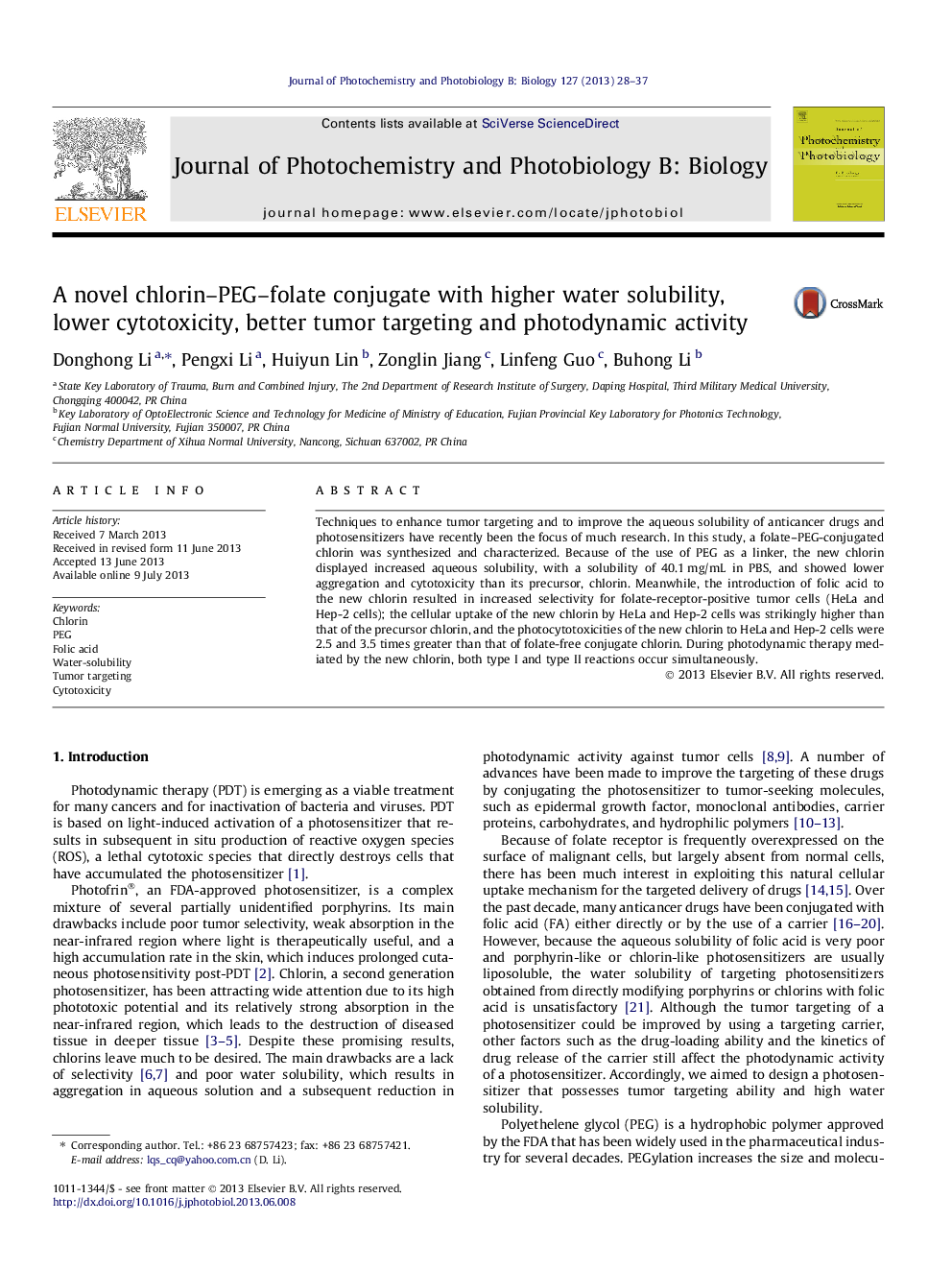| Article ID | Journal | Published Year | Pages | File Type |
|---|---|---|---|---|
| 30321 | Journal of Photochemistry and Photobiology B: Biology | 2013 | 10 Pages |
•A folate–PEG-conjugated chlorin (photosensitizer 1a) was synthesized and characterized.•1a Displayed increased aqueous solubility and lower aggregation.•1a Showed increased targeting for folate-receptor-positive tumor cells.•1a Present lower cytotoxicity and better photodynamic activity.•Both type I and type II reactions occur simultaneously in PDT mediated by 1a.
Techniques to enhance tumor targeting and to improve the aqueous solubility of anticancer drugs and photosensitizers have recently been the focus of much research. In this study, a folate–PEG-conjugated chlorin was synthesized and characterized. Because of the use of PEG as a linker, the new chlorin displayed increased aqueous solubility, with a solubility of 40.1 mg/mL in PBS, and showed lower aggregation and cytotoxicity than its precursor, chlorin. Meanwhile, the introduction of folic acid to the new chlorin resulted in increased selectivity for folate-receptor-positive tumor cells (HeLa and Hep-2 cells); the cellular uptake of the new chlorin by HeLa and Hep-2 cells was strikingly higher than that of the precursor chlorin, and the photocytotoxicities of the new chlorin to HeLa and Hep-2 cells were 2.5 and 3.5 times greater than that of folate-free conjugate chlorin. During photodynamic therapy mediated by the new chlorin, both type I and type II reactions occur simultaneously.
Graphical abstractFigure optionsDownload full-size imageDownload as PowerPoint slide
